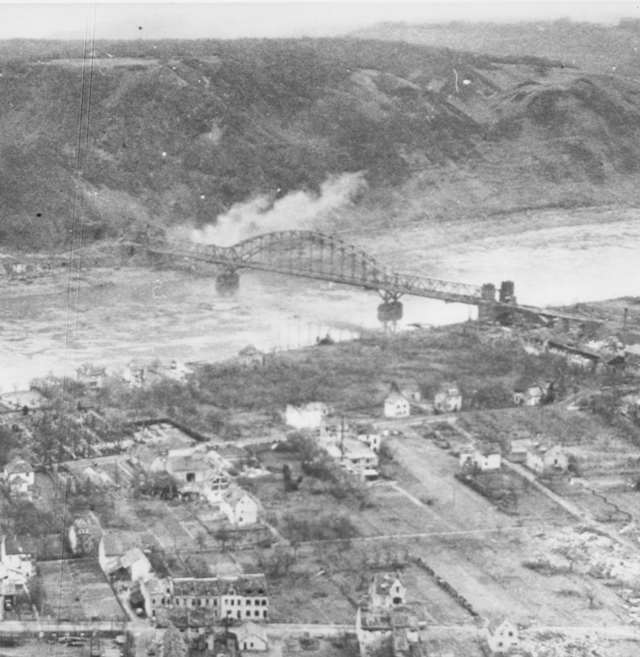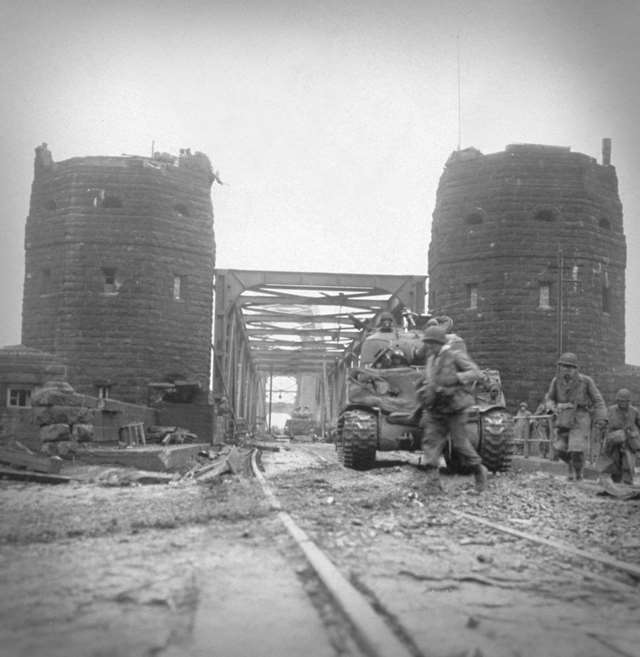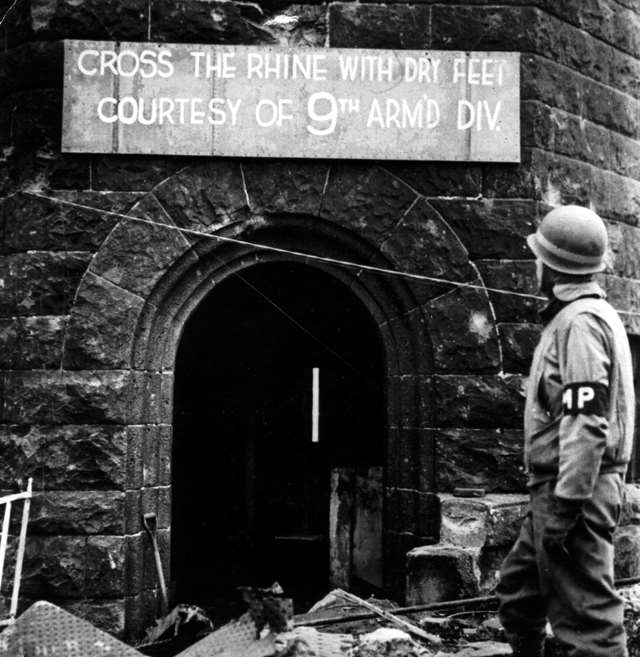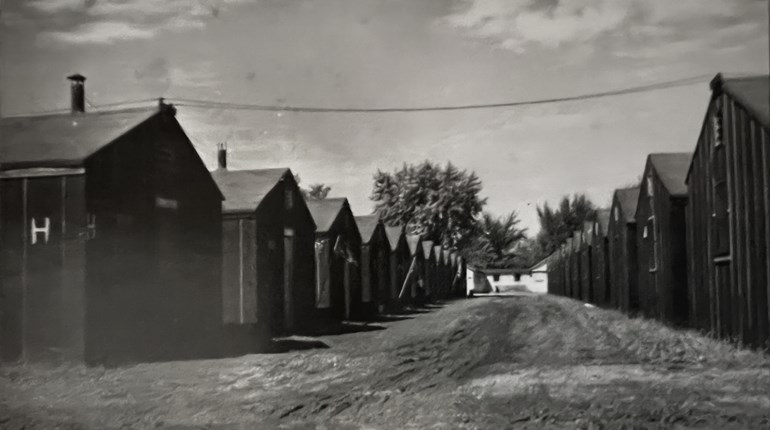
You don’t have to exactly admire Hollywood to be impressed by it: The capacities of professionals both in front of and behind the camera make incredible storytelling possible. Even stories told inaccurately can be successes, Hollywood-style. This week, an anniversary reminds us that where von Clausewitz’s “fog” meets the screenwriter’s or director’s yen for drama we often find eminently engaging tales steered strangely astray.

Our example follows the Allies’ rapid movement across the Low Countries and France to the very threshold of the German “Fatherland”—the Rhine River—71 years ago this week. German commanders and an increasingly unstable Führer had shot their last bolt in the Battle of the Bulge; now a rapid retreat into the heart of Germany and a final defense with the broad Rhine before them seemed the only hope on the Western Front. German commanders struggled moment-to-moment between the desire to evacuate much-needed manpower and equipment east of the Rhine, yet deny the Allies an easy crossing like an intact bridge could provide.
In the end, German commanders destroyed all but one of the rail and road bridges over the Rhine. The last was the Ludendorff at Remagen (15 miles south of Bonn), ironically named for World War I master strategist Gen. Erich Ludendorff and a main corridor for westward flowing supplies in WWI. Originally constructed with demolition in mind—including built-in locations for charges and conduit for their wiring—it escaped demolition through a series of mischances. In typically whirlwind fashion for those harried days, Major Johannes “Hans” Scheller, the last German commander at the bridge, arrived less than two hours before the Americans did, and fought the battle that was to become the subject of a noted Hollywood retelling: 1969’s “The Bridge at Remagen.”

While the movie version gets the feel of the small-unit action right in many respects, many other details go astray. The 9th Armored Division fought a nearly weeklong battle (complete with several artillery duels) over the town and approaches to the bridge. Rather than a unit-level grudge-match played out between rear echeloner Bradford Dillman (as Major Barnes) and George Segal (as the battle weary Lt. Hartman, and loosely based on German-born Distinguished Service Cross winner Lt. Karl Timmermann), the mission to capture the bridge was prioritized by Gen. Eisenhower himself after it was discovered intact on the afternoon of March 7, 1945.
Better portrayed are the challenges faced by Major Paul Kruger (played by Robert Vaughn, and based on the real Major Scheller). Arriving only hours before the actual assault on the bridge begins, he finds himself short of virtually everything but confusion. Explosives to demolish the bridge have not arrived, and few experienced troops were available for him to command in defense of his post (mixed, understrength or conscript units may have totaled 1,000 personnel, but many of these would melt away before the actual fight began). The major had been promised reinforcements including tanks and anti-aircraft gun crews, but they never arrived. The explosives, when they did arrive, were of a less powerful and reliable civilian/mining type, and well less than were to prove necessary.

Scheller set the final demolition for 1600 hours that day, which allowed several German units (including an experimental anti-aircraft battery) to escape the advancing 9th Armored. The major made his deadline, and succeeded in blowing a 30-foot crater in the bridge deck and section of a main truss. As shown in the film, both sides were astonished when the clearing smoke revealed the bridge still standing. The film features a lengthy assault that extends well into darkness, a German ambush of the attackers from a moored barge and devastating Allied casualties. The actual crossing took only a few minutes and was surprisingly casualty-free: Heavy support from American armor had cleared the bridge and its imposing granite towers of German defenders.
The threat of the bridgehead went far beyond the hints of the film. Adolf Hitler was reported to have been furious, and Minister of Propaganda Joseph Goebbels noted in his diary: “Nevertheless it must be assumed that the failure to blow the Remagen Bridge may well be due to sabotage, or at least serious negligence. The Fuhrer has ordered an inquiry and will impose a death sentence on anyone found guilty.”
Indeed, Kruger/Scheller would pay dearly for his balancing act in the movie, as he did in real life: The 32-year-old father of three was tried along with three others in the chain of Remagen command, sentenced and shot three days later for the events at the Ludendorff Bridge (a German court would pardon him in 1967, and restore his pension to his wife, Liesel). The movie ends at this point, noting that the bridge stood for another 10 days and allowed thousands of troops (more than 8,000 by the next afternoon, in fact) and hundreds of vehicles to cross the Rhine.

Hitler made the destruction of the bridge the focus of Western Front operations for the next several weeks. More than 100 German artillery pieces were within range of the Ludendorff and struck it more than 20 times, twice hitting inopportune vehicles—a fuel truck and an ammunition truck, adding further stress and damage to the battered arch. Luftwaffe Chief Hermann Göring threw dozens of aircraft at the bridge, including prized and rare Me 262 jet fighters and Arado Ar 234 jet bombers. He even asked for suicide volunteers among these elite pilots.
The now-defending Americans responded by creating the densest air defenses of the war, and shot down dozens of attackers (including seven of the jet aircraft, at least 40 all told), but suffered more than 200 casualties from their own falling anti-aircraft ordnance.
The Germans even launched V-2 ballistic missiles at the bridge on March 14. Although essentially unstoppable because of their high ballistic flight paths and extreme speed (for the day), the V-2s did no damage to the bridge. The closest came within 700 meters, the farthest missed by 40 miles.

The Ludendorff Bridge collapsed into the Rhine on March 17, killing 28 and injuring 93 U.S. Army engineers who were effecting yet another repair. The original explosion, thousands of troops and hundreds of vehicles had taken their toll, but not before six divisions crossed and cemented the bridgehead.
In retrospect, the movie version tells an interesting if incomplete tale. The press of an altogether different mindset and era got much closer:
“The Germans misjudged by a fateful 10 minutes the speed at which the 9th Armored Division was moving ... The men who, in the face of scattered fire and the great threat of the bridge blowing up under them, raced across and cut the wires have materially shortened a struggle in which every minute means lost lives. To all who utilized that 10 minutes so advantageously goes the deepest gratitude this country can bestow.” (New York Sun)


































